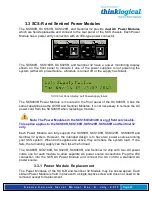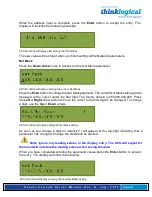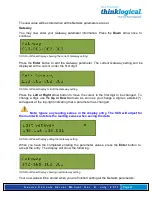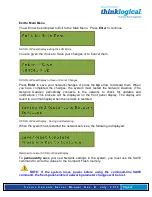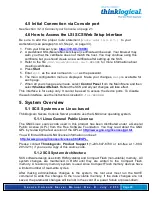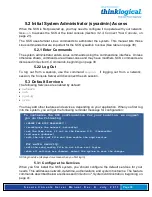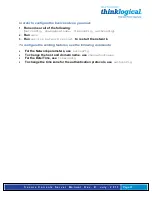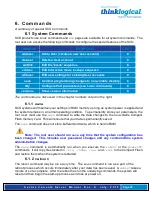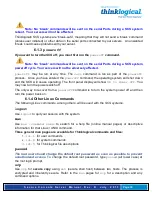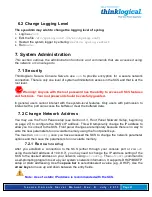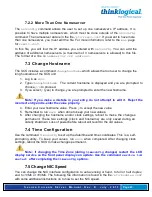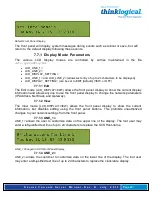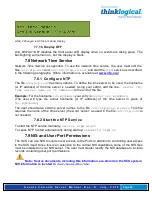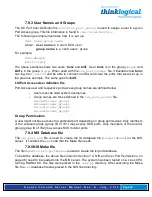
S e c u r e C o n s o l e S e r v e r M a n u a l , R e v . K , J u l y , 2 0 1 3
Page 35
4.5 Initial Connection via Console port
See Section 3.2.4, Connect your Console, on page 21.
4.6 How to Access the LSI SCS Web Setup Interface
Be sure to add the proper route statement (
route add 10.9.8.7…)
to your
workstation (see paragraph 4.4.3, Step 2, on page 33).
1. From your browser, type:
https://10.9.8.7:8098/
2. A predefined SSL (Secure Sockets Layer) certificate will be used. Your browser may
warn you that the certificate does not match the host. You may continue using this
certificate, but you should create a new certificate after setting up the SCS.
3. Refer to the file
/usr/local/doc/ssl.cert.README
for more information about
creating certificates.
4. Press Start.
5. Enter
root
as the user name and
root
as the password.
6. The main configuration menu is displayed. Make your changes.
Help
is available for
each page.
7. When all your changes are made, select Control Panel from the Main Menu and then
select Shutdown/Reboot. Reboot the SCS and all your changes will take effect.
This interface is for setup only. It cannot be used to access the device ports. To disable
the web interface, see the instructions located in
/lsi/README
.
5. System Overview
5.1 SCS Systems are Linux-based
Thinklogical
®
Secure Console Server products use the GNU/Linux operating system.
5.1.1 Linux General Public License
The GNU/Linux source code used in this product has been distributed under a General
Public License (GPL) from the Free Software Foundation. You may read about the GNU
GPL by reviewing the text version of the GPL at
http://www.gnu.org/licenses/gpl.txt.
You will find additional GNU license information online at:
http://www.gnu.org/licenses/licenses.html#GPL.
Please contact Thinklogical
®
Product Support (1-203-647-8700 or toll-free at 1-800-
291-3211) if you need a copy of this source code.
5.1.2 SCS System Architecture
SCS software design uses both RAM (volatile) and Compact Flash (non-volatile) memory. All
system changes are maintained in RAM until they are written to the Compact Flash
memory. A read-only memory system is used since Compact Flash memory devices have
a limited number of read-write cycles.
After making administrative changes to the system, the root user must run the SAVE
command to write the changes to the non-volatile memory. If the data changes are not
saved, the parameter changes will be lost in the event of a power failure or power-down.



